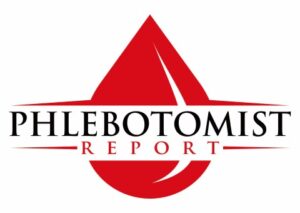Verifying a person’s details is just about the first step you take when going to perform a blood draw. It is so important that the labs being drawn are for the right patient.
I mean if you didn’t verify the person’s details, you could be drawing blood from the wrong person. And that is what you want to avoid.
The good thing is patient identification happens several times along the process. If you did miss something somewhere you could pick up on your mistake before it’s too late.
So, why is patient identification so important?
Patient identification is all about providing accurate information, care, and results for our patients. It is more than just verifying a name or date of birth. It’s about establishing a connection between the individual seeking care and the healthcare provider.
It’s about recognizing the uniqueness of each patient, their fears, their hopes, their medical history, and tailoring care to meet their specific needs.
In venipuncture, where a single mistake can have far-reaching consequences, patient identification offers safety, ensuring that the right patient receives the right treatment at the right time.
Here’s more information on why patient identification is so important:
1. The Basics: What’s Patient Identification?
Patient identification is the cornerstone of safe and effective healthcare delivery. Think of it as the first step in ensuring that the right patient receives the right treatment at the right time.
Patient identification involves verifying key details such as the person’s name, date of birth, and often comparing them with an official form of identification, like a driver’s license or hospital ID bracelet.
It may seem like a straightforward task, but in the fast-paced environment of healthcare, where multiple patients are often seen in quick succession, ensuring accurate patient identification can prevent a lot of potentially harmful errors.
Patient identification is also not just about ticking off boxes on a checklist, but it’s about establishing trust and building a strong foundation for the patient-provider relationship.
When healthcare professionals take the time to verify a patient’s identity, it sends a strong message that the patient’s well-being and safety are important. It shows that their individual needs are being recognized and respected, fostering a sense of confidence and reassurance in the care they’re about to receive.
So, while patient identification may seem like a routine task, its importance cannot be overstated in ensuring quality healthcare delivery.
2. Why it Matters in Venipuncture: Safety First, Always
Now, let’s delve into why patient identification is absolutely critical, especially in the context of venipuncture.
Picture this: you’re a phlebotomist gearing up for a busy day of drawing blood samples. You’ve got a list of patients lined up, each with their own unique set of medical needs and considerations. Without proper patient identification, you run the risk of mixing up samples, leading to potential misdiagnoses, incorrect treatments, or even adverse reactions to medications.
See the importance of identifying your patient? Every decision made can have life-altering consequences in the world of health care, there’s simply no room for error.
Furthermore, consider the legal and ethical implications of patient misidentification in venipuncture. Patients trust healthcare professionals with their lives, expecting to receive safe and accurate care. Failure to properly identify patients not only violates this trust but also opens the door to potential legal liabilities.
By prioritizing patient identification before performing venipuncture, healthcare providers uphold their duty to ensure patient safety and maintain the integrity of the healthcare system.
3. Building Trust and Confidence: It’s More Than Just a Checkmark
Beyond the technical aspects of patient identification lies a deeper layer of importance – the establishment of trust and confidence between healthcare providers and patients.
Picture yourself in the shoes of a patient entering a medical facility. You’re already feeling anxious about the upcoming procedure, and the unfamiliar surroundings only add to your apprehension. In this vulnerable moment, the simple act of a healthcare professional taking the time to verify your identity can make all the difference.
It reassures you that you’re not just another face in the crowd but a unique individual whose well-being is valued and prioritized.
Moreover, patient identification fosters a sense of partnership between patients and healthcare providers, laying the groundwork for effective communication and collaboration.
When patients feel seen and heard as individuals, they’re more likely to actively participate in their own care, asking questions, expressing concerns, and providing vital information about their medical history.
This open dialogue not only enhances the quality of care but also empowers patients to take ownership of their health journey. Thus, patient identification becomes more than just a procedural step, it becomes a catalyst for building meaningful relationships and promoting patient-centered care.
4. The Bottom Line: Safety First, Every Time
We work in a busy industry with so many tasks and responsibilities. However, amidst the chaos, one principle remains certain, that is, safety first, every time. Patient identification before venipuncture is not just a box to check off on a to-do list, it’s a fundamental aspect of providing high-quality, patient-centered care.
By taking the time to verify patient identity, healthcare professionals demonstrate their commitment to safety and excellence, setting the stage for successful outcomes and positive patient experiences.
Conclusion
While it is done more than once as a person goes through the healthcare process, patient identification isn’t just a checkbox on a form or a procedural step to be rushed through, it’s the bedrock upon which safe and effective healthcare is built.
It’s a testament to our commitment to putting patients first, ensuring that their well-being remains at the forefront of every decision and action. It serves as a beacon of clarity and certainty.
It empowers us to navigate the complexities of medical care with confidence, knowing that we’re on the right path guided by the principle of safety first, always.
And let us never forget that in the world of healthcare, it’s not just about drawing blood – it’s about safeguarding lives, one patient at a time.
